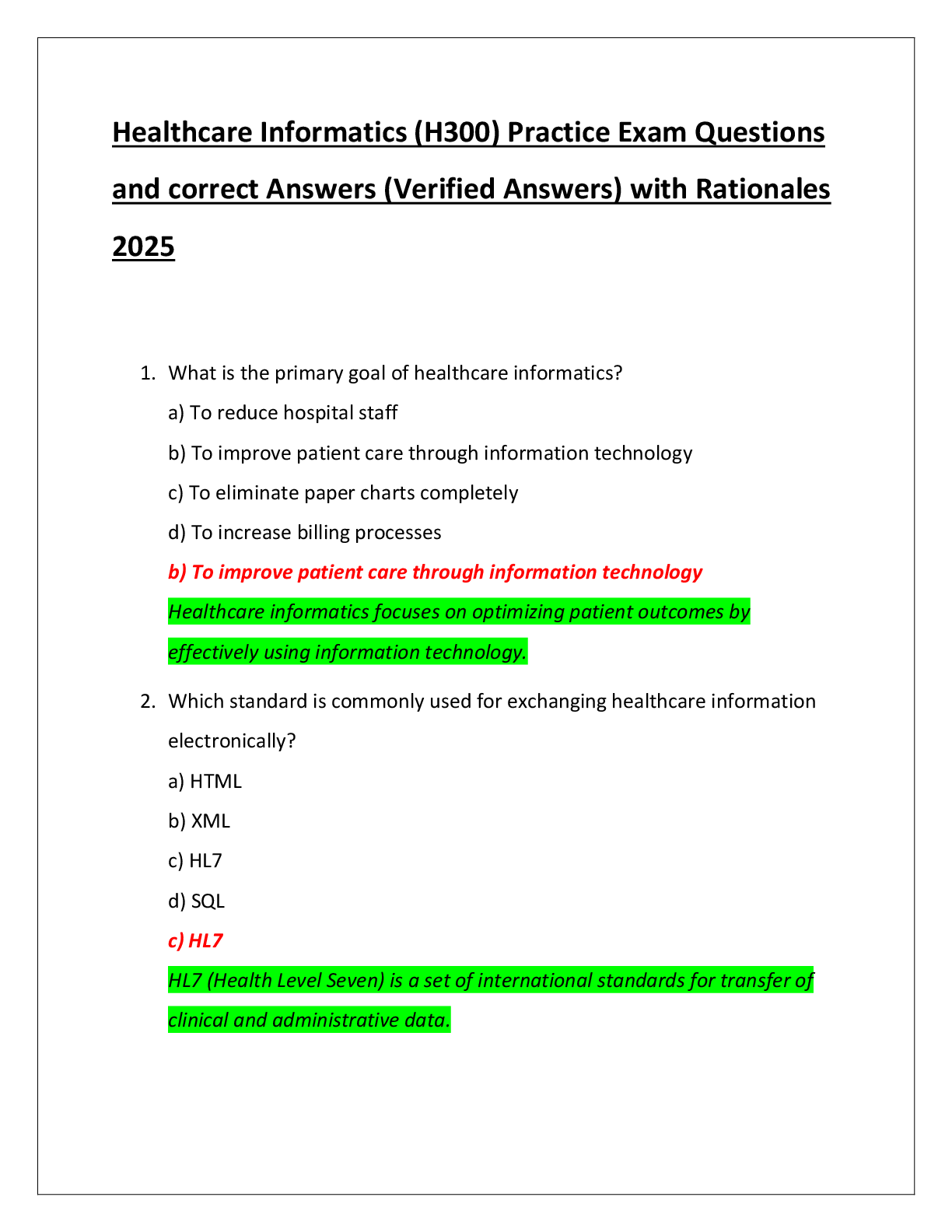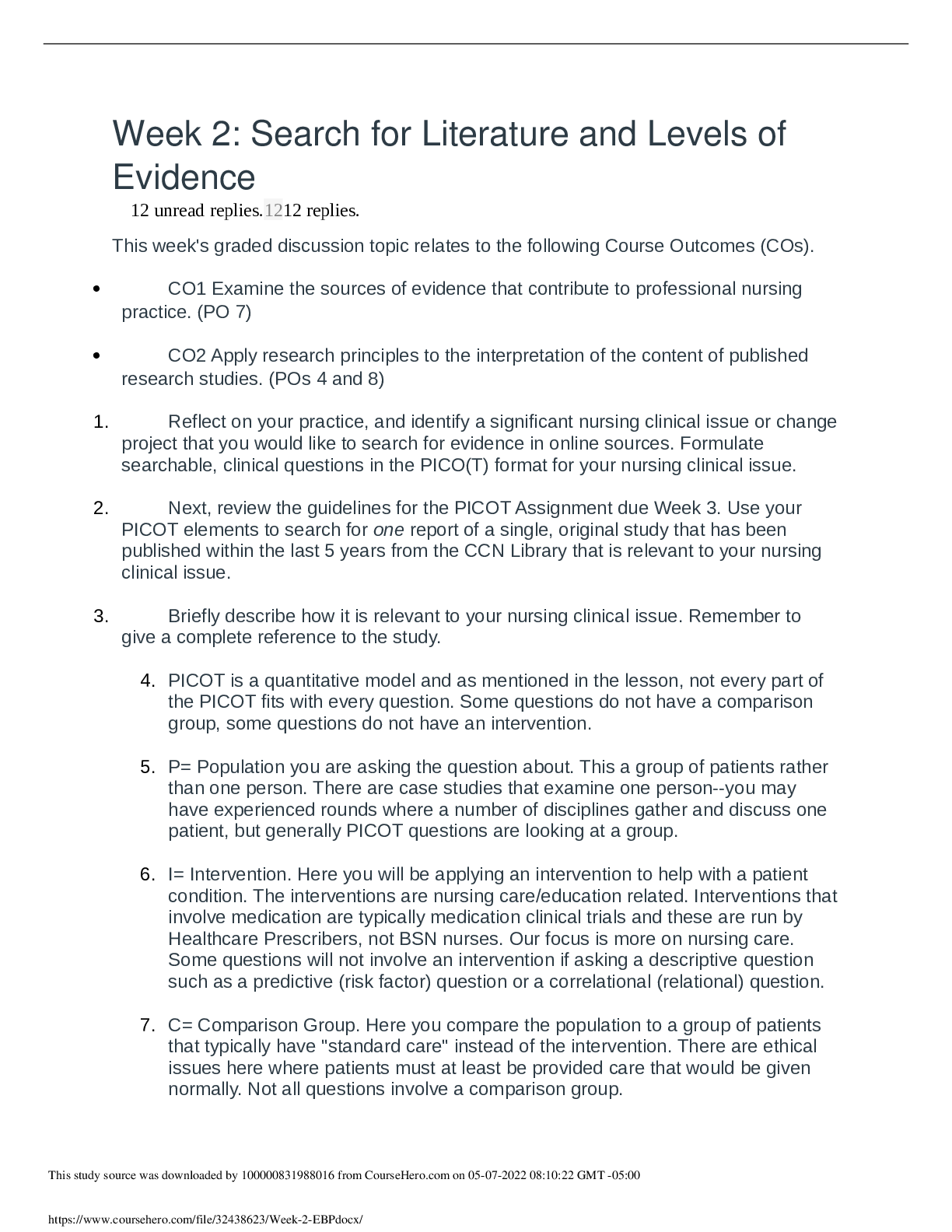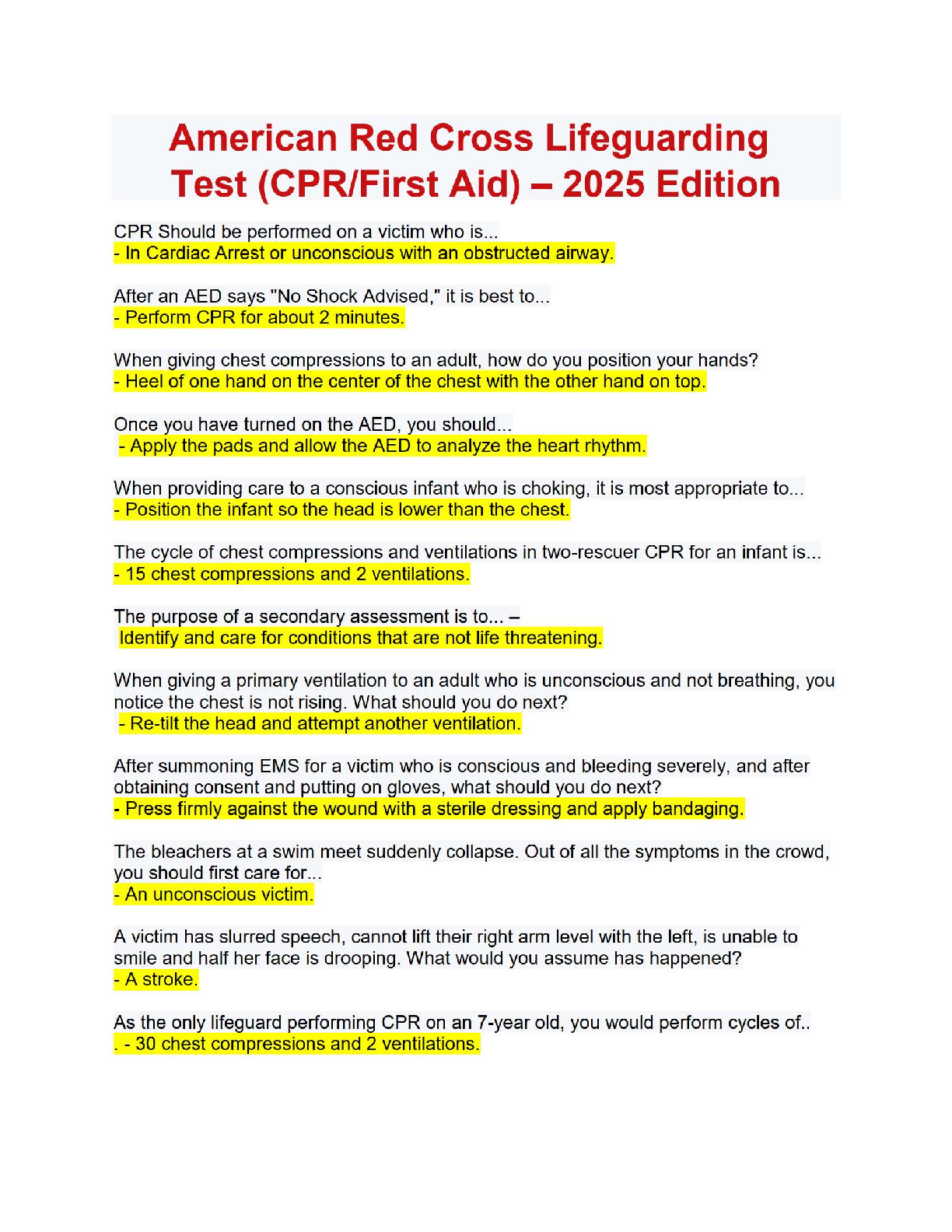NR503: Population Health, Epidemiology, & Statistical Principles - Infectious Disease Paper
Document Content and Description Below
Running head: INFECTIOUS DISEASE PAPER 1
Infectious Disease Paper
Sarah Conn
Chamberlain College of Nursing
NR503: Population Health, Epidemiology, & Statistical Principles
August 2019
This stud
...
y source was downloaded by 100000831988016 from CourseHero.com on 05-09-2022 15:07:07 GMT -05:00
https://www.coursehero.com/file/48073059/NR503-Week-5-Infectious-Disease-Paper-Conn-1-1docx/
INFECTIOUS DISEASE PAPER 2
Infectious Disease Paper
Introduction of Communicable Disease
The Centers for Disease Control and Prevention (CDC) states that the Hepatitis B virus
causes acute or chronic liver inflammation (CDC, 2018). Fatigue, dark urine, abdominal pain,
nausea, loss of appetite, vomiting, fever, clay colored stool, jaundice and joint pain are all
symptoms of acute hepatitis B. In the beginning progression of hepatitis b patients are often
without symptoms. The spread of the hepatitis b virus is through body fluids and is easy to
transfer. Once the patient reaches the chronic stages of hepatitis b they can have liver failure,
liver cancer and even death. When the hepatitis b virus is just in the acute stage a patient does not
require medications for treatment. Patients are encouraged to have adequate nutrition, fluids and
rest. Hepatitis B medication is available however, it requires a lifetime commitment once began
(CDC, 2018).
Demographics are important to know when talking about an infectious disease. The
United States reported 7,461 deaths in 2014, that is 2.3 deaths per 100,000. It was reported in
2014 that there were 2,791 new cases of hepatitis b in the Unites States (CDC, 2017). 1.0 per
100,000 were the reported incidence rate for 2016 (CDC, 2016). The actual numbers would be
much higher however all new cases are not reported.
Detriments of Health
What are the detriments to health with hepatitis b? They include things like person,
social, economic and environmental factors. Intravenous drug use, unprotected sex, high risk
behaviors and tattooing are personal factors that could contribute to contracting the hepatitis b
virus. A study that was conducted assessed the correlation between intravenous drug use and
This study source was downloaded by 100000831988016 from CourseHero.com on 05-09-2022 15:07:07 GMT -05:00
https://www.coursehero.com/file/48073059/NR503-Week-5-Infectious-Disease-Paper-Conn-1-1docx/
INFECTIOUS DISEASE PAPER 3
hepatitis b, there were 229 participants and a 28% prevalence rate (Kandelacei & Vaezjalai,
2017). Education, culture and country of origin are social risk factors that could contribute to the
contraction of hepatitis b. Hepatitis b is more wide spread in foreign countries and if a patient is
from a foreign country they are more likely to have the hepatitis b virus that an individual from
the United States. What could lead to patients not receiving proper vaccinations, treatment or
diagnosis? Poor economic status. Another environmental risk factor that increases the risk is
unsanitary living conditions, the unproper disposal of human waste.
Host Factors
What host factors could contribute to the progression of the hepatitis b virus? Sex, age,
race and immune system. A study conducted that evaluated the host-factor target therapies
deduced that when identifying host factors, it may interfere with the viral-replacement cycle.
This can then decrease the antigenic and viral loads for individuals whom have the hepatitis b
virus (Bertoletti, 2014). Resistance of the virus, reservoir of infection and the period of
communicability are agent factors. Poor healthcare and poor sanitation are environmental factors
that contribute the progression of the hepatitis b virus.
Role of FNP
Family Nurse Practitioners play an important role in the community when it comes to
hepatitis b. They screen at risk patients, do laboratory testing, evaluations, referrals, and strategic
management (Tarrant, 2013). The first step for an FNP is testing to determine if a patient has the
virus. Once that is confirmed it is to be reported to the proper state agencies. An FNP must
collect the data and report it and then they would conduct and analysis. After receiving an
analysis, the treatment plan would then be developed. Hepatitis B is a life changing diagnosis
and those infected will deal with the diagnosis for their lifetime. FNPs are a major player in the
This study source was downloaded by 100000831988016 from CourseHero.com on 05-09-2022 15:07:07 GMT -05:00
https://www.coursehero.com/file/48073059/NR503-Week-5-Infectious-Disease-Paper-Conn-1-1docx/
INFECTIOUS DISEASE PAPER 4
game when it comes to managing the disease for these patients. FNPs will assess, screen,
diagnosis and treat patient whom are hepatitis b positive. Each new case must be reported to the
proper state and possible national agencies
[Show More]
Last updated: 3 years ago
Preview 1 out of 5 pages






























